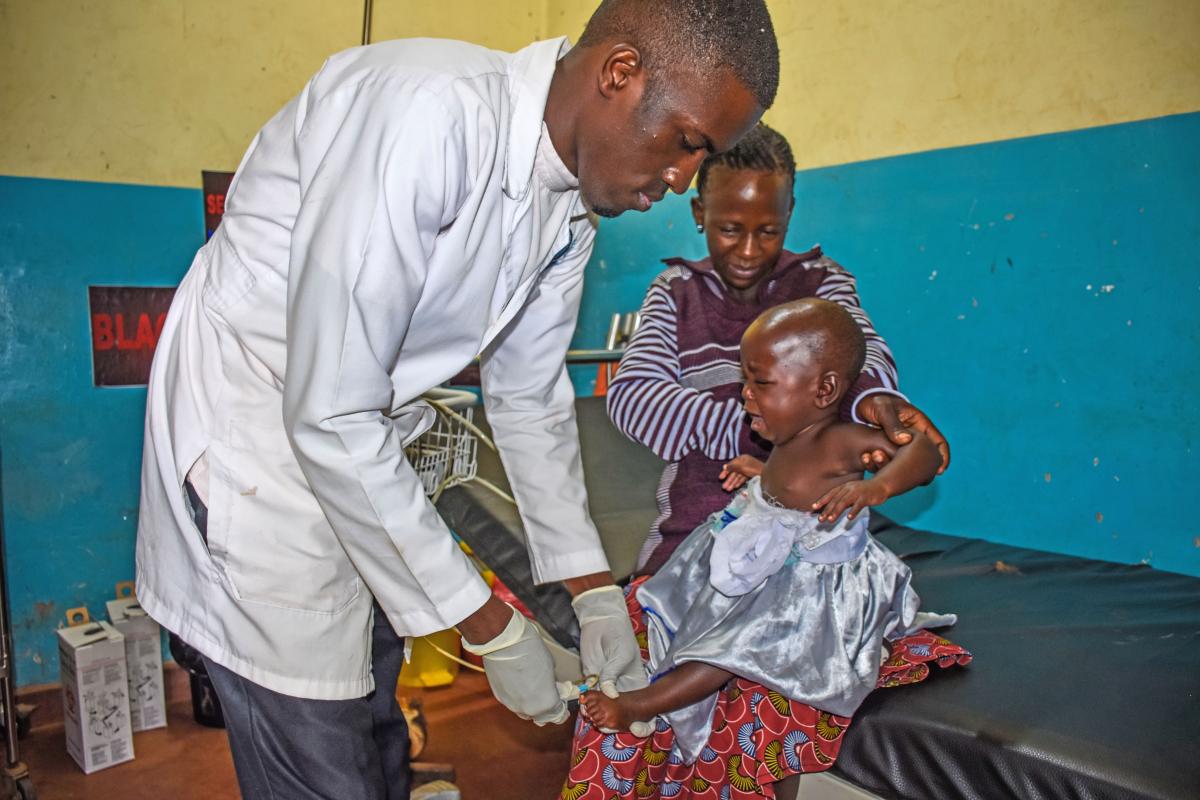Enabel functionalises emergency corners in Uganda’s health facilities
Emergency Medical Services (EMS) play a critical role in providing timely and efficient medical care to individuals in emergency situations in the first 1 hour. The inability to respond immediately and effectively to an emergency medical crisis has remained a major deficiency of the health care system in Uganda.
The state of emergency medical services has in the recent past suffered numerous shortfalls ranging from financing to human resources availability, poor infrastructure and poor coordination. The recent baseline needs assessment for EMS services in selected Busoga and Rwenzori facilities indicated that out of all the health facilities assessed, none scored well in emergency readiness. Issues identified included non-functional emergency units at the respective facilities, lack of basic equipment, medicines and supplies to support emergency services, limited human resource available to support emergencies coupled with major knowledge gaps in terms of emergency assessment and care.
Dr. Joseph Oumo, Senior Medical Officer for EMS at the Ministry of Health, shared the alarming results, “We discovered that 50% of Health Centers IVs (HC IVs) lacked essential emergency infrastructure. In the Busoga region, for example, out of ten health centers assessed, only three had dedicated emergency beds.” He further noted that many health centers lacked designated emergency areas in their outpatient departments, and when such spaces were available, they were often understaffed and poorly equipped. In some cases, emergency protocols were not consistently followed, leading to potentially life-threatening delays in care.
The World Health Organization recommends that every facility should possess a functional resuscitation area to be able to give timely quality care needed at any one moment.
Enabel under the WeCare project, has a mandate to contribute towards improvement of the quality of emergency medical services and one of its envisioned outcomes is to functionalize the emergency referral system from the community to the facilities. This entails establishment of emergency resuscitation areas at Health Centers IVs, General Hospitals and Regional Referral Hospitals.
Following the baseline and support supervision visits, recommendations were drafted to create a functional resuscitation space at some of the health facilities. At Namwendwa Outpatient Department, for instance, a focal person was identified at the facility to support EMS activities. Some of the interventions highlighted included immediate removal of building materials from the designated emergency room and setting up using available equipment in the facility. The focal person at the emergency area was taken through general triage protocols and practices which were also provided and displayed at the triage area. The current emergency staff were also scheduled for upcoming emergency trainings, but are meanwhile being supported through Continuous Medical Education engagements. Data collection tools were scheduled for dissemination, however, in the interim, an improvised emergency register in the form of a book was created, allowing registration at emergency corners to start immediately.
While Enabel’s primary focus in health is on maternal and childcare, these EMS corners are designed to handle a wide range of emergencies, benefiting not only mothers in critical conditions but also other patients in urgent need of care. “The national health system does not segregate maternal care from the rest of the emergency services,” explained Lillian Barungi, the Public Health officer in charge of EMS at Enabel. “The reason we had to set up these well-organized emergency corners, equipped with the necessary supplies and staff, is to ensure that all emergency cases are managed effectively,” she added.
Creating dedicated spaces for emergencies is important, but Dr. Marion Nakyeyune, Principal Medical officer EMS at the Ministry of Health, emphasized that the real key to saving lives is “ensuring that staff are properly trained and that the right protocols are in place.” This was highlighted by an incident at Nankandulo HC IV. Dr. Anita Nanswenze, the health center’s in-charge, recalled a case in which a mother with severe pneumonia arrived struggling to breathe. Thanks to the EMS corner, the mother was quickly stabilized with oxygen before being transferred to the ward for further care. “We've also treated many cases of snake bites and trauma injuries where the EMS corner made a life-saving difference,” Dr. Nanswenze added.
The EMS corners have proven invaluable in responding to emergencies, particularly in cases of respiratory distress in infants, severe bleeding in mothers, and traumatic injuries. With essential equipment like oxygen concentrators and emergency medications, health workers will be able to provide immediate care when every second counts. “These corners are not just physical spaces; they are life-saving units,” Dr. Nanswenze emphasized.
Looking toward the future, Dr. Oumo shared the Ministry of Health's plan to integrate EMS into the national health strategy. “Our goal is to ensure that every health facility, from HC IIIs to regional referral hospitals, is equipped to provide emergency care,” he said, assuring that the EMS corners will continue to be a crucial part of the healthcare system’s long-term success.
Dernières actualité de ce projet
Pas d'actualité

